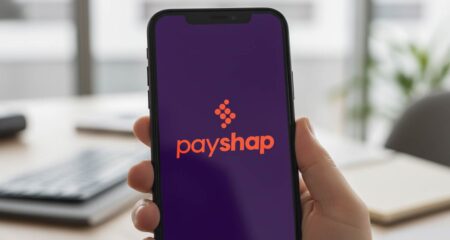 The adoption of rapid payments in South Africa, via BankservAfrica’s PayShap platform, is far lower than in countries such as India and Brazil.
The adoption of rapid payments in South Africa, via BankservAfrica’s PayShap platform, is far lower than in countries such as India and Brazil.
A big reason could be the cost to consumers.
There are obviously differences in how long rapid payment platforms (RPPs) have been available in South Africa, Brazil and India – South Africa being the most recent to launch. Other factors such as comparatively high fees and a less aggressive awareness drive are also hampering PayShap’s growth, with the economy being the ultimate loser.
In the Indian market, RPPs interoperate with bank accounts, digital wallets and even WhatsApp, which makes it easy for businesses to interact with their customers and facilitate real-time transactions simultaneously.
The impact of RPPs is most strongly observed in the informal segment of the world’s fifth largest economy. Rural communities and small businesses have decreased their reliance on cash, while the flow of money in the economy has gained momentum due to a sharp increase in real-time digital transactions.
“In India, they do nine billion transactions a month on the UPI platform,” Peach Payments CEO Rahul Jain said in an interview on the TechCentral Show, to be published soon.
“It has changed the peer-to-peer and consumer-to-business dynamic from a payments perspective. It has even changed citizen-to-government and government-to-citizen transactions – everything is running on this real-time payments platform.”
Free
India’s UPI was launched in 2016 and has been free for individuals since its inception.
From April this year, UPI began charging merchants on a sliding scale – from 0.5% to 1% of the transaction value depending on predefined commercial categories. But there are no fees for consumers to use the platform.
Brazil’s RPP, called Pix, uses a similar pricing model. Regulators there have insisted on free use of the platform for individuals, while merchants are charged a flat 0.33% fee for each transaction processed. Pix was launched in 2020 and adoption rates have surpassed credit card penetration in the South American nation.
Read: TymeBank makes PayShap transactions free
According to BankservAfrica – the automated clearing house owned by the South African Reserve Bank and a coalition of South African commercial banks, and which runs the RPP – more than 800 000 transactions worth some R660-million have taken place since launch seven months ago.
The platform aims to reduce the need for cash – and eventually replace it – but fees are getting in the way. This is how PayShap fees compare to the banks’ other rapid payment options (using their base accounts and not accounts with bundled options):
| Bank | PayShap fees | EFT instant payment fee | Cash send/electronic wallet fees |
| Absa | <R200 is R2.50 <R3 000 is R7.50 |
<R1 000 is R10 >R1 000 is R49 |
R10/R1 000 |
| Capitec | <R100 is free R100-R1 000 is R1.50 >R1 000 is R3 |
R7.50 | R40 – R1 000 is R9.50 R1 001-R3 000 is R16 |
| Discovery | <R100 is R1 <R1 500 is R5 >R1 500 is 0.4% |
Same as PayShap fees | N/A |
| FNB | <R100 is free R0.65/R100 |
R45 | R2+R2.40/R100 |
| Nedbank | R7.50/transaction | R40 | <R1 000 is R8.50 R1 001-R2 500 is R14 |
| Standard Bank | R7.50/transaction | <R2 000 is R10 >R2 000 is R50 |
R50-R500 is R9 R501-R1 000 is R11.50 >R1 001 is R13.50 |
| TymeBank | Free | R7/R1 000 (max R35) | R7/R1 000 |
The reliance on cash in South Africa is skewed towards lower-income segments, where every cent counts. If PayShap is to replace cash, it needs to match the flexibility of cash.
When cash changes hands, there is no residual fee paid to a third party. This allows cash to flow more freely in the economy; when people must pay to move money around, they tend to do so less often.
Furthermore, to change a behaviour, people must know of what they are changing to and why. “UPI is always on television in India,” said Peach Payment’s Jain about the marketing money behind it.
In South Africa, by contrast, apart from news articles on the launch of the platform and some platform-specific marketing done by the banks, there is little by way of concerted mass marketing to drive awareness of PayShap.

E-wallets are often used by the banks as a gateway to get unbanked recipients to open a full-service bank account. The recipient, who might receive money via a banked relative on a regular basis, develops a familiarity with the bank’s tools, usually via ATM and USSD interactions. This could be serving to disincentivise banks from driving awareness of the bank-agnostic PayShap over in-house equivalents.
Read: How digital upstarts are menacing South Africa’s big banks
In cases where money will inevitably be sent via one digital platform or another, PayShap’s interoperability gives consumers more choice in how they access the funds they receive. However, pricing that is in some cases very similar to existing instant payment or electronic wallet facilities already offered by the banks is not compelling enough to motivate behavioural changes.
In short, the banks – with the exception of TymeBank – have priced PayShap to fail. — (c) 2023 NewsCentral Media




